A study to assess the effectiveness of structured teaching programme on knowledge and practice regarding prevention of health hazards related to biomedical wastages among the health team members in the selected primary health centers in Anantnag, UT Jammu and Kashmir
2 Department of Computer Sciences, University of Kashmir, South Campus, Jammu and Kashmir-192101, India
Received: 05-Feb-2023, Manuscript No. AMHSR-23-88728; Editor assigned: 08-Feb-2023, Pre QC No. AMHSR-23-88728 (PQ); Reviewed: 22-Feb-2023 QC No. AMHSR-23-88728; Revised: 05-Apr-2023, Manuscript No. AMHSR-23-88728 (R); Published: 12-Apr-2023
Citation: Bhat ABR, et al. A Study to Assess the Effectiveness of Stuctured Teaching Programme on Knowledge and Practice Regarding Prevention of Health Hazards Related to Biomedical Wastages among the Health Team Members in the Selected Primary Health Centers in Anantnag, UT Jammu and Kashmir. Ann Med Health Sci Res. 2023;13:683-691.
This open-access article is distributed under the terms of the Creative Commons Attribution Non-Commercial License (CC BY-NC) (http://creativecommons.org/licenses/by-nc/4.0/), which permits reuse, distribution and reproduction of the article, provided that the original work is properly cited and the reuse is restricted to noncommercial purposes. For commercial reuse, contact reprints@pulsus.com
Abstract
Biomedical Waste (BMW) refers to the waste generated during diagnosis, treatment and immunization of people or animals in healthcare institutions. With the outbreak of the COVID-19 pandemic, there has been a surge in hazardous biomedical waste, adding to the already heaping pile. The BMW generation has increased manifold owing to the usage of masks, gloves, PPE kits, sample kits, urine bags, and syringes. And untreated and improperly managed BMW is a potential source of infection. In addition, the untreated or rudimentary handling of BMW creates a nuisance and decreases patient satisfaction. Thus, this unscheduled rise in biomedical waste in the wake of the COVID-19 pandemic has necessitated its proper management and disposal mechanism to avoid hazardous impact on the environment and people. Biomedical waste is one of the major causes of a wide range of health hazards which should be seriously taken into concern. A wide range of human activities contributes towards biomedical waste management. To reduce the incidence of such illness, the health team members should have adequate knowledge regarding these hazards. Waste management has become a major environmental management crisis in recent years, as the magnitude of waste streams increases and grows in complexity due to consumer based society. Hazardous waste like biomedical waste in particular has been subject to detailed and costly regulations since the early 1980’s, since unregulated toxic wastes were linked with intense health effects in exposed populations at Love Canal, New York and Times Beach, Missouri.
Keywords
STP; Knowledge; Practice; Health care team; PHC
Introduction
Almost 90% of the Jammu and Kashmir biomedical waste ends up in huge rubbish tips, mostly found near the ill equipped medical shops and hospitals, posing a serious threat to human health and the environment [1]. The medical shops that are currently operating in Jammu and Kashmir do not know the anything about biomedical waste.
It is either dumped in the nearby water bodies or the pit that is found close to these shops and hospitals. Neither, government of Jammu and Kashmir is concerned about the management of biomedical waste [2-5]. A proper squad needs to deputed to check this menace in order prevent infections and other environmental problems [6].
All medical shops, private clinics, hospitals and medical laboratories in valley are poorly managed, without any controls on materials accepted or records kept, and no security. Waste pickers, especially children are often found collecting recyclables without any proper protection measures [7]. In this sense, biomedical waste dump sites pose significant health and environmental threats both to the people involved in the operations and to the wider general public living close by and here it has been grossly neglected [8].
The key challenges in biomedical waste management in the state of Jammu and Kashmir include speed of data availability, under reporting of waste generated and handling capacity, operation of healthcare facility without authorization under biomedical waste management rules, lack of awareness among various sections of the staff among others. They solution to this problem lies in action not in reporting and blaming one another as has been done by the concerned authorities over the past [9].
Statement of problem
A study to assess the effectiveness of structured teaching programme on knowledge and practice regarding prevention of health hazards related to biomedical wastages among the health team members in the selected primary health centers in Anantnag, UT Jammu and Kashmir.
Objectives of the study
-
• To assess the knowledge of health team members on
biomedical waste management before intervention [10].
- • Pre-test and post-test knowledge and practice regarding prevention of health hazards due to biomedical wastages. • To find out the association between
- • Post-test knowledge with selected demographic
variables.
• Post-test practice with selected demographic variables.
• To assess the practice of health team members regarding prevention of health hazards in biomedical waste management.
• To evaluate the effectiveness of structured teaching programme on biomedical waste and prevention of health hazards among health team members.
• To determine the relationship between
Hypothesis
• H1: Mean post-test knowledge of health team members
who received Structure Teaching Programme (STP)
regarding prevention of health hazards in biomedical
wastage will be significantly higher than the mean pretest
knowledge score [11-15].
• H2: Mean post-test practice score of health team members
who received Structure Teaching Programme (STP)
regarding prevention of health hazards in biomedical
wastage will be significantly higher than the mean pretest
practice score.
• H3: (a) There will be significant relationship between
pre-test knowledge score and pre-test practice score among
health team members who received Structure Teaching
Programme (STP) regarding prevention of health hazards in
biomedical wastage. (b) There will significant relationship
between post-test knowledge score and post-test practice
score among health team members who received Structure
Teaching Programme (STP) regarding prevention of health
hazards in biomedical wastage.
• H4: (a) There will be significant association between
post-test knowledge score and selected demographic
variables among health team members who received
Structure Teaching Programme (STP) regarding
prevention of health hazards in biomedical wastage. (b)
There will be significant association between post-test
practice score and selected demographic variables among
health team members who received Structure Teaching
Programme (STP) regarding prevention of health hazards
in biomedical wastage [16].
Delimitation
The study was limited to:
• Knowledge and practice of the health team members
regarding prevention of health hazards in biomedical
waste management.
• 60 health team members working in selected PHC’s.
Projected outcome
The study findings will help to improve the knowledge and practice regarding prevention of health hazards related to biomedical wastages among the health team members working in different PHC’s of district Anantnag [17].
Review of literature
Review of the literature and studies which are related to the topic under study was done on studies related to the problems specific to the impaired healthcare waste management as well as studies related to prevention of health hazards in biomedical waste management in healthcare environmental setting [18].
• Section 1: Literature related to concept and meaning of
bio medical waste management.
• Section 2: Literature related to health hazards in bio
medical waste management.
• Section 3: Literature related to prevention of health
hazards in bio medical waste management.
• Section 4: Literature related to knowledge and practice of
the health team members regarding biomedical wastage in
PHC.
Materials and Methods
A quasi experimental approach which one group pre-test and design was used to assess the knowledge and practice on biomedical waste management among health team members [19].
Dependent variable
Refers to knowledge and practice of health team members on biomedical waste management.
Independent variable
Refers to structured teaching programme on prevention of health hazards in biomedical waste management among health team members.
Research setting
The study was conducted at different PHCs of district Anantnag [20].
Population
Health team members of primary health centers were the population for the study.
Sampling
Sample and sample size: Health team members of primary health centre were sample for the study. The size of the sample was 60.
Sampling technique: Purposive sampling technique was used to select the health team members of selected primary health centers [21].
Inclusion criteria
• Team members who were willing to participate in the
study.
• Available at the time of data collection.
Exclusion criteria
• Team members who were not willing to participate in the
study.
• Team members who were not available at the time of data
collection.
Validity of tool
Content validity of the tool and STP was established by seven experts comprised of two assistant professors, four nursing tutors and a statistician.
Reliability of tool
The tool and STP after validation was subjected to list for its reliability. The reliability was established by using split half method. Reliability coefficient of knowledge questionnaire STP was found to be r=0.92 by spearman brown prediction formula, which indicated that the tool was reliable [22-25].
Data collection procedure: Formal permission to conduct the study was obtained from the concerned authorities. The period of data collection was carried out during 3/07/2022 to 18/07/2022. In order to obtain a free and true response the subjects were explained about the confidentiality of their response that were provided. The study was carried out on 60 health team members who fulfilled the inclusive criteria, the sample were selected by using purposive convenient sample. Pre-test was conducted by structured questionnaire for collecting data.
After 8 days again post-test was conducted, using the same structured questionnaire which was used for pre-test same samples. The effectiveness of STP was assessed on the basis of their written answer of the knowledge questionnaire. During the data collecting period the researcher maintain good support with the health team members. With their full cooperation the researcher completed data collection successfully.
Plan for data analysis: The data obtained was analyzed in terms of objectives of the study using descriptive and inferential statistics. The plan of data analysis was as follows:
• Organization of data in master sheet/computer.
• Personal data were analyzed in terms of frequencies and
percentage.
• The knowledge and practice among health team members
regarding biomedical waste management to measure in
before and after STP were analyzed in terms of frequency
percentages, mean, standard deviation and were presented
in the form of bar/column diagram.
• Paired ‘t’ test was used to test the significant difference
between two means in pre-test and post-test of
knowledge.
• Correlation co-efficient ‘r’ value was used to find out the
relationship between pre-test knowledge score and posttest
knowledge score.
• Chi-square was used to study the association between
post-test level of knowledge and demographic variables.
Results
Organization of study findings
The data collected from the health team members were organized, analyzed and presented under the following sections (Table 1).
• Section A: Demographic variable of health team members
• Section B: Assessment of pre-test and post-test level of knowledge.
• Section C: Association between levels of knowledge with the demographic variable (Figure 1).
• Section A: Demographic variables of health team members.
| S. No | Demographic variables | No | % |
|---|---|---|---|
| 1 |
|
||
| 20-25 years | 15 | 25 | |
| 26-35 years | 32 | 53.3 | |
| 36-40 years | 13 | 21.67 | |
| 2 |
|
||
| Male | 20 | 33 | |
| Female | 40 | 67 | |
| 3 |
|
||
| Junior health assistants | 12 | 20 | |
| Senior health assistants | 26 | 43.33 | |
| Lady health visitor | 22 | 36.67 | |
| 4 |
|
||
| Nuclear family | 52 | 86.67 | |
| Joint family | 8 | 13.33 | |
| 5 |
|
||
| 3000-5000 Rs. | 12 | 20 | |
| 5000-12000 Rs. | 30 | 50 | |
| Above 15000 Rs. | 18 | 30 | |
| 6 |
|
||
| 1-10 years | 18 | 30 | |
| 11-15 years | 22 | 36.67 | |
| 16-21 years | 12 | 20 | |
| Above 21 years | 8 | 13.33 | |
Table 1: Frequency and percentage distribution of health team members selected demographic variables.
Percentage distribution of health team members according to age in years reveals that highest percentage (53.3%) were in the age group of 26-35 years, whereas lowest (21.67%) of them were in the age group of 36-40 years (Table 2). However 25% of the health team members were in the age group of 20-25 years (Figures 2 and 3).
| Gender | Frequency | Percentage (%) |
|---|---|---|
| Male | 20 | 33% |
| Female | 40 | 66.67% |
Table 2: Differentiation of age groups.
Percentage distribution of health team members according to educational status reveals that the majority 43.33% were senior health assistants, 36.67% were lady health worker and remaining 20% were junior health assistants (Figure 4).
Hence it can be interpreted that the percentage distribution of health team members with regard to designation was more or less similar.
Percentage distribution of health team members according to type of family reveals that highest percentage (86.67%) belong to nuclear family and only (13.33%) of them belong to joint family [26]. Hence it shows that most of the health team members belonged to nuclear family (Figure 5).
Percentage distribution of health team members according to income reveals that 20% of health team members get 3000-5000 RS, 50% of workers get 5000-12000 RS, and remaining 30% of health team members get above 12000 RS (Figure 6).
Percentage distribution of health team members according to experience reveals that highest percentage (36.67%) had 11-15 years of experience, 30% of them had 1-10 years of experience, 20% of the health team members had 16-20 years of experience and only 13.33% had less than one year of experience (Table 3).
| S. No | Variables | Level of knowledge | |||||
|---|---|---|---|---|---|---|---|
| Inadequate (<50%) | Moderate (50% to 75%) | Adequate (>75%) | |||||
| f | % | F | % | f | % | ||
| 1 | Concept and meaning | 48 | 80 | 7 | 11.67 | 5 | 8.33 |
| 2 | Precautions | 26 | 43.33 | 32 | 53.3 | 2 | 3.33 |
| 3 | Management | 27 | 45 | 32 | 53.3 | 1 | 1.7 |
| 4 | Prevention | 49 | 81.7 | 8 | 13.3 | 3 | 5 |
| 5 | Overall | 31 | 51.7 | 29 | 48.3 | - | - |
Table 3: Level of knowledge of health team members on bio medical waste management n=60.
Section B comparison between pre-test and posttest level of knowledge
Frequency and percentage distribution of pre-test knowledge scores on bio medical waste management among health team members reveals that the most (80%) of the health team members had inadequate knowledge on concept and meaning, where as it was 43.33%, 45%, 81.7%, 51.7% for precaution, management, prevention respectively (Table 4). Further majority of the health team members had moderate knowledge in concept and meaning, precaution, management and prevention (11.67%, 53.3%, 53.3%, and 13.3%). Only 1.7% had adequate knowledge [27].
| S. No | Variables | Level of knowledge | |||||
|---|---|---|---|---|---|---|---|
| Inadequate (<50%) | Moderate (50% to 75%) | Adequate (>75%) | |||||
| f | % | F | % | f | % | ||
| 1 | Concept and meaning | - | - | 11 | 18.3 | 49 | 81.7 |
| 2 | Precautions | - | - | 24 | 40 | 36 | 60 |
| 3 | Management | - | - | 32 | 53.3 | 28 | 46.7 |
| 4 | Prevention | - | - | 18 | 30 | 42 | 70 |
| 5 | Overall | - | - | 10 | 16.7 | 50 | 83.3 |
Table 4: Level of knowledge of health team members after STP n=60.
Frequency and percentage distribution of post-test knowledge scores on bio medical waste management among health team members reveals that the most (81.7%) of the health team members had adequate knowledge on concept and meaning, where as it was 60%, 46.7%, and 70% for precaution, management, prevention respectively [28]. Further majority of the health team members had moderate knowledge in concept and meaning, precaution, management and prevention (18.3%, 40%, 53.3%, and 30%). However none of the health team members had inadequate knowledge.
The below Table 5 depicts the mean, standard deviation and mean percentage of pre-test and post-test knowledge scores on bio medical waste management among health team members.
| S. No | Knowledge variables | Max scores | Mean | Standard deviation | Mean percentage | |||
|---|---|---|---|---|---|---|---|---|
| Pre-test | Post-test | Pre-test | Post-test | Pre-test | Post-test | |||
| 1 | Concept, meaning | 6 | 2.7 | 5.23 | 0.979 | 0.745 | 45 | 87.17 |
| 2 | Precautions | 7 | 3.62 | 5.82 | 0.958 | 0.77 | 51.71 | 83.14 |
| 3 | Management | 8 | 4.3 | 6.35 | 0.926 | 0.777 | 53.75 | 79.38 |
| 4 | Prevention | 9 | 4.68 | 6.98 | 1 | 0.813 | 52 | 77.56 |
| 5 | Overall | 30 | 15.32 | 24.33 | 3.223 | 1.997 | 51.07 | 81.1 |
Table 5: Mean pretest and posttest knowledge scores on biomedical waste management among health team members.
With regard to the concept and meaning, the pre test mean was 2.70 with standard deviation 0.979 and the mean percentage was 45 and whereas the post-test mean was 5.23 with SD 0.745 and the post-test mean percentage was 87.17.
When considering the precautions, the pre-test post-test mean is 3.62 and 5.82 with standard deviation 0.950 and 0.770 and the mean percentages are 57.71 and 83.14 respectively [29].
When considering the management, the pre-test post-test mean are 4.30 and 6.35 with standard deviation 0.926 and 0.777 and the mean percentage are 53.75 and 79.38 respectively.
When considering the prevention, the pre-test post-test mean are 4.68 and 6.98 with standard deviation 1.000 and 0.813 and the mean percentage are 52 and 77.56 respectively.
On considering the overall knowledge, the pre-test post-test mean are 15.32 and 24.33 with standard deviation 3.223 and 1.997 and the mean percentage are 51.07 and 81.1 respectively.
Section C association between levels of knowledge with demographic variables
The below Table 6 depicts the mean, standard deviation and mean difference and ‘t’ test of pre-test and post-test knowledge scores on bio medical waste management among health team members.
| S. No | Variables | Mean | SD | Mean difference | Paired ‘t’ test | ||
|---|---|---|---|---|---|---|---|
| Pre-test | Post-test | Pre-test | Post-test | ||||
| 1 | Concept meaning | 2.7 | 5.23 | 0.979 | 0.745 | 2.533 | 18.154 df 59*** |
| 2 | Precautions | 3.62 | 5.82 | 0.958 | 0.77 | 2.2 | 18.972 df 59*** |
| 3 | Management | 4.3 | 6.35 | 0.926 | 0.777 | 2.05 | 14.918 df*** |
| 4 | Prevention | 4.68 | 6.98 | 1 | 0.813 | 2.3 | 15.844 df 59*** |
| 5 | Overall | 15.32 | 24.33 | 3.223 | 1.997 | 9.017 | 24.113 df 59*** |
| S=Significant; NS=Not Significant; *= 0.05; **= 0.01; ***= 0.001. | |||||||
Table 6: Determine the association between pre-test knowledge score with selected demographic variables.
With regard to the concept and meaning, the pre-test mean was 2.70 with standard deviation 0.979 and whereas the post-test mean was 5.23 with SD 0.745 and the post-test mean difference was 2.533.
When considering the precautions, the pre-test post-test mean are 3.62 and 5.82 with standard deviation 0.950 and 0.770 and the mean difference 2.200.
When considering the management, the pre-test post-test mean are 4.30 and 6.35 with standard deviation 0.926 and 0.777 and the mean difference 2.050.
When considering the prevention, the pre-test post-test mean are 4.68 and 6.98 with standard deviation 1.000 and 0.813 and the mean difference 2.300 [30]. On considering the overall knowledge, the pre-test post-test mean are 15.32 and 24.33 with standard deviation 3.223 and 1.997 and the mean difference 9.017. The calculated ‘t’ value for concept and meaning, precaution, management, prevention and overall knowledge on biomedical waste management are 18.154, 18.972, 14.918, 15.844 and 24.113 respectively. As the calculated value for all the aspects are greater than the Table 7 value 3.460 at 59 df, the research hypothesis H1 is accepted at p<0.001.
| S. No | Demographic variables | Chi-square | Df | Inference |
|---|---|---|---|---|
| 1 | Age in years | 0.16 | 2 | NS |
| 2 | Gender | 0.032 | 1 | NS |
| 3 | Educational status | 3.85 | 1 | S* |
| 4 | Type of family | 0.75 | 1 | NS |
| 5 | Income | 11.151 | 2 | S** |
| 6 | Experience | 0.705 | 3 | NS |
| S=Significant; NS=Not Significant; *p<0.05; **p<0.01; ***p<0.001. | ||||
Table 7: Association between post-test knowledge scores of health team members and their demographic variables.
Discussion
This article deals with the discussions in accordance with the objectives of the study and the hypothesis.
The first objective was to assess the existing knowledge of health team members in biomedical waste management. In the assessment of the level of knowledge pre-test revealed (81.7%) had inadequate knowledge (13.3%) had moderately adequate knowledge and no one had adequate knowledge.
Hence the researcher concludes that the health team members had inadequate knowledge in pre-test may be due to lack of awareness about importance of biomedical waste management. Inadequate knowledge in this area may lead to serious consequences in the world health. Even though the health workers become mentally active in their life, attention should be given education for healthy life and prevention of many related problems all over the world.
Second objective of the study was to find out the effectiveness of structured teaching programme among health team members regarding health hazards of biomedical waste management. With regard to knowledge, mean post-test score 15.32 with SD 3.223 was higher than the mean pre-test score 24.33 with SD 1.997, which showed that the STP was effective in increasing the knowledge. So the research hypothesis H1 was accepted. Which was highly significant at 0.001 levels. Use of structured teaching program is an innovative idea. The structured teaching program creates enthusiasm among the health team members and helps in presenting the material with interaction among the workers. This is, therefore, not a surprise that the structured teaching program was found to be effective. Because significant improvement was found in knowledge on health hazards of biomedical waste management.
The third objective of the study was to find out the association of knowledge score with selected demographic variables. The Chi-square value computed for association of pre-test level of knowledge of health team members with selected demographic variables.
There was association between the knowledge regarding biomedical waste management and gender, previous knowledge, sources of knowledge and demographic variables of health team members.
Health team members learn more effectively when they already know something about a content area and when concepts in that area mean something to them and to their particular background or culture. When new information to the health team member’s prior knowledge, they activate the interest and curiosity, and infuse instruction with a sense of purpose.
The knowledge on biomedical waste management and responsibility among the PHC going health team members is inadequate. Structured teaching program is effective in improving the knowledge of the health team members in these issues. Further, the findings of this study can be useful in planning future research and programming.
Conclusion
This article presents the major findings, conclusion, implication, recommendation of the study.
In the assessment of the level of knowledge pre-test revealed (81.7%) had inadequate knowledge (13.3%) had moderately adequate knowledge and no one had adequate knowledge.
Hence the researcher concludes that the health team members had inadequate knowledge in pre test may be due to lack of awareness about importance of biomedical waste management. Inadequate knowledge in this area may lead to serious consequences in the world health. Even though the health workers become mentally active in their life, attention should be given education for healthy life and prevention of many related problems all over the world.
With regard to knowledge, mean post-test score 15.32 with SD 3.223 was higher than the mean pre-test score 24.33 with SD 1.997, which showed that the STP was effective in increasing the knowledge. So the research hypothesis H1 was accepted. Which was highly significant at 0.001.
References
- Achary DB, Necta Singh. The book on hospital waste management. Minerva Press, New Delhi, India, 2000;10-14.
- Ramakrishna Gouda B. In house waste containment efforts in select health care institutions of Bangalore city. J ISHWM. 2003;22:24-27.
- Bertin ML. Communicable diseases, infection prevention for nurse at work and at home nurse cline. North Am. 1996;34: 509-526.
- Chandrasekhar. Needle sticks injuries in Indian prospective. J Nursing. 2005;56:86.
- Book IN. Implementation of various technologies for treatment and disposal of biomedical waste. New Delhi. 2001.
- Kundar GD. Hospital planning design and management. 1st edition, Tata Mc Graw Hill publishers, New Delhi, India. 2000.
- Kothari CR. Research methodology, methods and techniques. 2nd edition, New Age publishers, New Delhi, India. 2004.
- Park K. Park text books preventive and social medicine. 21st edition, Banarasidas Bhahot Publishers, Jabalpur, India. 2009;595-661.
- Polit DF, Beck TC. Nursing research principles and methods. 7th edition, Lippincott Williams and Wilkins, Philadelphia, 2004;758.
- World Health Organization. Safe management of biomedical shaps in India New Delhi WHO. Health care waste policy. World Health Organization. 2005
- Marthick J, Bryant EA. Ozone layer. 4th edition, Reddin Publishers, Wollongong, Australia. 2004;621-682.
- Kole TE. Potential hazards perioperative environment. 2nd edition. Oxford University Press Publication. 452-468.
- Green S. Occupational hazards. 4th edition, Raduga Publishers, Moscow, Russian, 2006;692-713.
- Ezzati M. House hold energy technology. 6th edition, Berkeley, California, 456-476.
- Corvalan C. Environmental health and equity. 12th edition. Geneva, Switzerland, 2005;498-513.
- Olson SH. Climate change and health. 2nd edition. USA, 2004;532-550.
- Michael JC. Micro climatic conditions. 2nd edition. 231-240.
- John E. Disease prevention and control. 2nd edition. Emory University Press, Atlanta, Georgia. 2004;134-145.
- Villanueva E. Greenhouse sprayers. 4th edition. 2003;451-456.
- Manohar AS. Instruction to observers at the surface observations. Delhi, India, 45-62.
- Malhothra MS. Science today. Times of India Publications, Delhi, India, 1971;14-16.
- Campbell LD. Global health situations and projections. World health organization. Geneva, Switzerland, 1992;24.
- Rosenau M. Public health and preventative medicine. 13th edition. 1992;410-418.
- Goldberger E. A primer of water, electrolyte and acid-base syndromes. J Med Edu. 1960;1068.
- Corvalan. Ionizing radiation and health. Public health. 2002;6.
- Cousins C, Miller DL, Bernardi G, Rehani MM, Schofield P, et al. International commission on radiological protection. ICRP Publication. 2011;120:1-25.
- Straut CP. Public health implication of ratio active waste release. World Health Organisation, Geneva, Switzerland. 1970;9-61.
- Little JB. Air quality guidelines for Europe. WHO Regional Publications European, Copenhagen, Denmark. 1987;426.
- Diamant RME. The international environment of dwellings, London. 1971.
- Lawrence MT. Current medical diagnosis and treatment. 34th edition, Lange Publications, Poland. 1995;45.

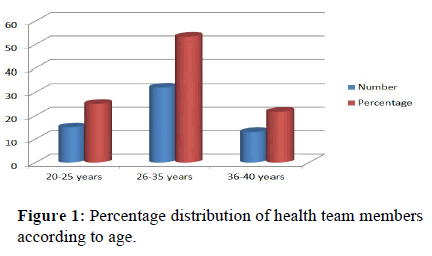

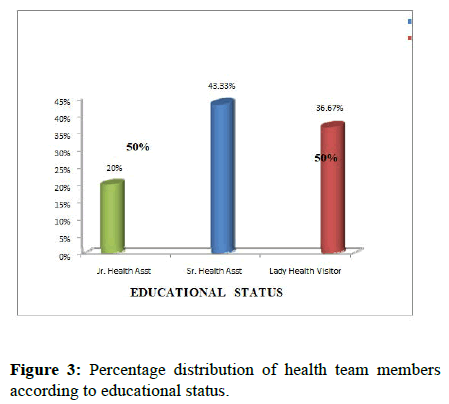
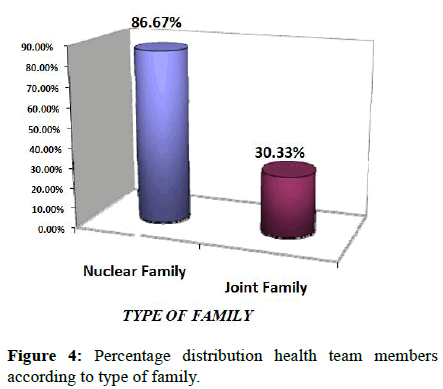
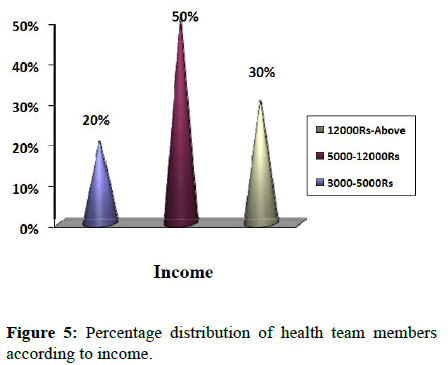
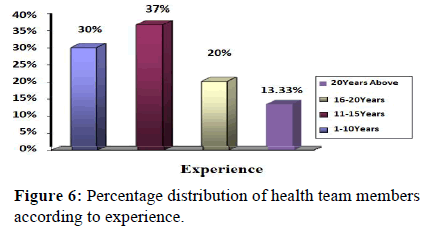



 The Annals of Medical and Health Sciences Research is a monthly multidisciplinary medical journal.
The Annals of Medical and Health Sciences Research is a monthly multidisciplinary medical journal.